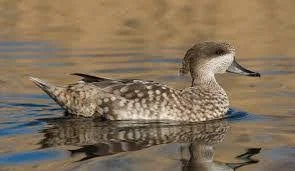UPSC GS 2
National Panchayat Awards
- News: The National Panchayat Awards Conferment Ceremony 2024, organized by the Ministry of Panchayati Raj, will take place on 11th December 2024 in New Delhi.
- Objectives of the Awards:
- To inspire Panchayats to achieve excellence and set benchmarks for other rural local bodies.
- To foster ease of living in rural areas through sustainable and inclusive development initiatives.

- Alignment with LSDG Themes: The Ministry of Panchayati Raj (MoPR) has aligned the awards with 17 Sustainable Development Goals (SDGs), grouping them into nine Localized Sustainable Development Goals (LSDG) themes:
-
- Poverty-Free and Enhanced Livelihoods Panchayat.
- Healthy Panchayat.
- Child-Friendly Panchayat.
- Water-Sufficient Panchayat.
- Clean and Green Panchayat.
- Self-Sufficient Infrastructure in Panchayat.
- Socially Just and Socially Secured Panchayat.
- Panchayat with Good Governance.
- Women-Friendly Panchayat.
-
- Award Categories:
- Deen Dayal Upadhyay Panchayat Satat Vikas Puraskar (DDUPSVP): Recognizes the top three Gram Panchayats or equivalent bodies for exceptional performance under each of the nine LSDG themes.
- Nanaji Deshmukh Sarvottam Panchayat Satat Vikas Puraskar: Honors the top three Gram, Block, and District Panchayats for their aggregate achievements across all nine themes of DDUPSVP.
- Special Award Categories:
- Gram Urja Swaraj Vishesh Panchayat Puraskar: Conferred to the top three Gram Panchayats or equivalent bodies for excellence in adopting and utilizing renewable energy sources.
- Carbon Neutral Vishesh Panchayat Puraskar: Awarded to the top three Gram Panchayats or equivalent bodies for significant efforts in promoting carbon neutrality through renewable energy use.
- Panchayat Kshamta Nirmaan Sarvottam Sansthan Puraskar: Presented to three institutions nationwide for their instrumental role in supporting Gram Panchayats to achieve Localized Sustainable Development Goals.
Read also: The Ousting of Bashar al-Assad | Key Insights for UPSC Prep
Pradhan Mantri Poshan Yojana
- News: The government has revised the price of food items given to children under the Pradhan Mantri Poshan Yojana.
- Definition: Previously known as the National Programme of Mid-Day Meal in Schools, this scheme was renamed as the Pradhan Mantri POSHAN Scheme in September 2021.
- Aim: It is a centrally sponsored initiative aimed at providing one hot cooked meal to students from Balvatika (pre-primary) to Class VIII in Government and Government-aided schools on all school days.
- Objectives: The scheme is designed to tackle two major challenges faced by children in India: hunger and access to education.
- Nutritional Improvement: Enhance the nutritional status of students in Government and Government-aided schools.
- Boost School Attendance: Motivate children from disadvantaged backgrounds to attend school regularly and focus better on their studies.
- Support During Adversity: Provide nutritional aid to elementary school children in drought-affected and disaster-hit areas during summer vacations.

- Recent Updates:
- To address rising costs, the Ministry of Education, based on the inflation index provided by the Labour Bureau, has increased the ‘Material Cost’ under the scheme by 13.70%.
- The cost for food will be distributed in the ratio of 60:40 between the central and state governments.
- The cost has now been fixed at Rs 6.19 per child per day for Bal Vatika and primary class students and Rs 9.29 for upper primary class students.
- Grains like wheat and millet are supplied by the government, while the amount for other materials like vegetables, spices and oil has been increased.
- Nodal Ministry:
- The scheme is implemented under the guidance and supervision of the Ministry of Education.
- Significance:
-
- By ensuring nutritional support and encouraging school participation, the Pradhan Mantri Poshan Shakti Nirman Scheme plays a crucial role in fostering holistic development among children, especially from economically weaker sections.
Amrit Gyaan Kosh
- News: Union Minister of State Dr. Jitendra Singh recently launched “Amrit Gyaan Kosh” Portal to strengthen governance training.
- Definition:
- The Amrit Gyaan Kosh Portal has been developed collaboratively by the Capacity Building Commission and Karmayogi Bharat.
- It is designed to foster self-reliance in governance training and enhance governance capacity-building efforts.

- Platform Details:
- Built on the iGOT platform, the portal serves as a comprehensive repository for best practices in governance and policy implementation.
- It supports faculty and trainers by providing curated resources to align their teaching methods with global standards, while addressing India’s unique administrative challenges.
- Alignment with SDGs:
- The portal aligns with 15 out of the 17 Sustainable Development Goals (SDGs), focusing on critical areas like:
- Health
- Education
- Agriculture
- Digital Governance
- The portal aligns with 15 out of the 17 Sustainable Development Goals (SDGs), focusing on critical areas like:
- Significance:
-
- By offering curated resources, the portal empowers faculty to enhance training quality and contribute to improving governance at various levels.
- It strengthens India’s efforts towards achieving sustainable development and effective policy implementation.
Removal of Vice President
- News: The opposition INDIA bloc recently moved a notice to remove Vice-President and Rajya Sabha chair Jagdeep Dhankhar from office.
- Eligibility for Removal: The Vice President can be removed from office before completing the term.

- Initiation of Resolution:
- A resolution for the removal of the Vice President can only be introduced in the Rajya Sabha and not in the Lok Sabha.
- A notice period of at least 14 days must be provided before moving such a resolution.
- Approval Requirements:
- The resolution must secure a majority of the total membership of the Rajya Sabha (Effective Majority).
- Additionally, it must receive approval from the Lok Sabha by a Simple Majority.
- Grounds for Removal:
- The Constitution does not specify any grounds for the removal of the Vice President.
- Historical Context:
-
- There is no record of a no-confidence motion being moved against the Rajya Sabha Chairman.
- However, in 2020, a no-confidence motion was moved against the Deputy Chairman of the Rajya Sabha.
Bima Sakhi Yojana
- News: The Prime Minister recently introduced the Bima Sakhi Yojana during an event in Panipat, Haryana.
- Definition: An initiative by the state-owned Life Insurance Corporation (LIC), the scheme aims to empower women through financial literacy and insurance awareness.

- Eligibility:
- Open to women aged 18-70 years who have completed Class 10.
- Relatives of existing agents, employees, and retired LIC employees are not eligible.
- Training and Stipend:
- Selected women will receive specialized training to equip them with knowledge and skills for the insurance sector.
- A monthly stipend will be provided during the initial three years:
- First Year: ₹7,000 per month.
- Second Year: ₹6,000 per month.
- Third Year: ₹5,000 per month.
- Commission Structure:
- Bima Sakhis will earn commissions, including ₹48,000 (excluding bonuses) in the first year.
- Career Opportunities:
- After training, participants can work as LIC agents.
- Graduates from the program may qualify for development officer roles within LIC.
- Target:
- The initiative aims to recruit two lakh Bima Sakhis over the next three years.
Manama Dialogue
- News: External Affairs Minister S Jaishankar recently spoke at the 20th IISS Manama Dialogue panel on ‘Whither Regional Strategic Cooperation.’
- Definition: The Manama Dialogue is an annual global summit focusing on security and geopolitical issues, held in Bahrain. It was first initiated in 2004.

- Organizers: The Dialogue is organized by the International Institute for Strategic Studies (IISS), in collaboration with Bahrain’s Ministry of External Affairs.
- Purpose and Platform: It serves as a platform for national leaders, ministers, policymakers, and strategic thinkers to engage in discussions on pressing regional security issues.
- 2024 Theme: The theme for the 2024 edition of the Dialogue was “Middle East Leadership in Shaping Regional Prosperity and Security.”
- International Participation: The event invites participants from various regions, including Asia, Africa, Europe, North America, and Latin America.
UPSC GS 3
Marbled Duck
- News: Bird enthusiasts were thrilled to see a marbled duck — an unusual winter migrant — at Sultanpur National Park.
- Definition: The Marbled Duck, also referred to as the marbled teal, is a small-sized duck with distinct features, including a black bill, grayish-brown plumage marked with pale spots, a dark patch near the eyes, and no speculum on its wings.

- Scientific Name: Marmaronetta angustirostris.
- Distribution: The species is found across the central and southwestern Palearctic, with fragmented populations extending from Central Asia to northwest Africa and the Iberian Peninsula.
- Migratory Behavior: Populations inhabiting colder regions migrate south during winter, reaching destinations such as North Africa and the Indian subcontinent.
- Habitat Preferences:
- Marbled Ducks thrive in various wetland types, including temporary or semi-permanent ones, whether natural or man-made, as long as shallow water is available.
- They exhibit a preference for brackish wetlands over purely fresh or saline ones and favor areas with well-structured vegetation.
- Behavioral Characteristics:
- This species is social, non-territorial, and exhibits non-aggressive behavior.
- Marbled Ducks generally follow monogamous breeding patterns, with pairs forming annually starting in the autumn season.
- They are known for their slow, low-altitude flight, easily recognized by their elongated necks and wings.
- Conservation Status:
-
- IUCN Red List Status: Near Threatened.
Subaru Telescope
- News: The Subaru Telescope has captured of a pair of interacting galaxies, designated as NGC 5257 and NGC 5258.
- Specifications and Features:
- The telescope has a diameter of 8.2 meters (27 feet), allowing it to gather substantial amounts of light for observing distant celestial objects.
- It is equipped with an adaptive optics system comprising 261 actuators, which adjust the mirror’s shape to counteract distortions caused by gravity.
- Its powerful light-gathering capability enables it to detect faint light emitted by distant celestial bodies.

- Location:
- Situated on the dormant volcano Mauna Kea, at an altitude of 4,163 meters, on Hawaii’s Big Island.
- The telescope’s location was chosen to take advantage of the clear skies and minimal atmospheric interference.
- Unique Design:
- Unlike most observatories, which use hemispherical domes, the Subaru Telescope is housed in a cylindrical dome to reduce air turbulence around the telescope, ensuring better image clarity.
- History and Development:
- Construction of the Subaru Telescope began in 1992, and it commenced its first observations in 1999.
- The telescope’s name, Subaru, refers to the Japanese name for the Pleiades star cluster.
- Achievements:
-
- It has observed a wide range of celestial phenomena, from nearby meteors to galaxies as distant as 13.1 billion light-years away.
See more: Falling Fertility Rates in India – Key Insights for UPSC
Voronezh Series
- News: India is set to finalise a landmark USD 4 billion defence agreement with Russia, aimed at acquiring an advanced long-range early warning radar system called Voronezh series.
- Introduction:
- The Voronezh radar system plays a vital role in Russia’s early warning and missile defense strategy.
- It is designed to detect and track a wide array of threats, including ballistic missiles and aircraft, at ranges extending up to 8,000 kilometers.

- Deployment and Operation:
- First introduced in 2009, the Voronezh radars became fully operational in 2012.
- Strategically located across Russia, these radars ensure comprehensive coverage, enhancing Russia’s ability to defend against potential missile threats.
- Technology and Features:
- These radars utilize phased array technology, allowing for rapid electronic steering of the radar beam.
- This technological advancement makes the Voronezh system more efficient and mechanically simpler compared to older radar systems.
- The system includes different variants that operate in varying wavelength ranges:
- Meter-range (Voronezh-M)
- Decimeter-range (Voronezh-DM)
- Centimeter-range (Voronezh-CM)
- Some versions integrate multiple wavelength ranges for enhanced performance.
- Integration with Missile Defense Systems:
- Voronezh radars are part of a larger Missile Attack Early Warning System.
- They can work in coordination to create a comprehensive radar picture, which helps detect missile threats and track space activities.
- Strategic Importance:
-
- These radars are crucial for providing early warnings against ballistic missile threats.
- They are strategically positioned to maximize their detection capabilities across a variety of threat scenarios.

